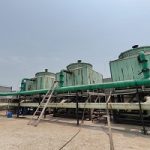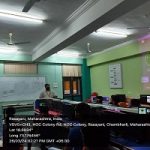PHCET and PCE successfully conducted workshop on “Non Destructive Testing” for students and faculties of PHCET and PHP to cover various aspects of Non Destructive Techniques and its applications.
Venue
Resource Person
Coordinators
Department
SOM Lab, PHCET
Mr. Tony Lau and Mr. Edward Ma M/s Zhongke Innovation Technology Co. Ltd, Hubei, China
Dr. R. C. Prasad, Dr. G. V. Patil
Mechanical Engineering
Non-Destructive Testing (NDT) is a set of techniques used to evaluate the properties of materials, components, or systems without causing damage to the tested object. This type of testing is crucial in various industries to ensure the safety, reliability, and integrity of structures and components. NDT plays a vital role in quality control, maintenance, and failure analysis.
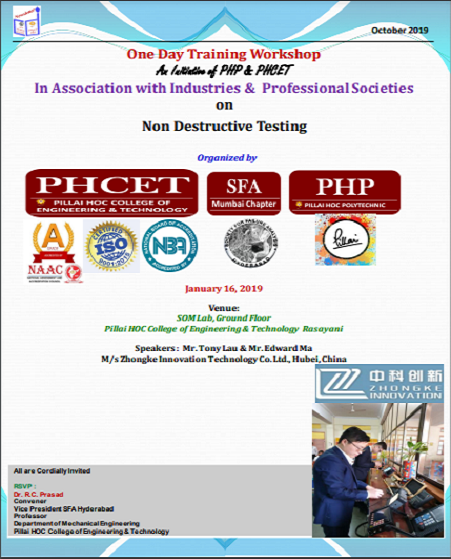

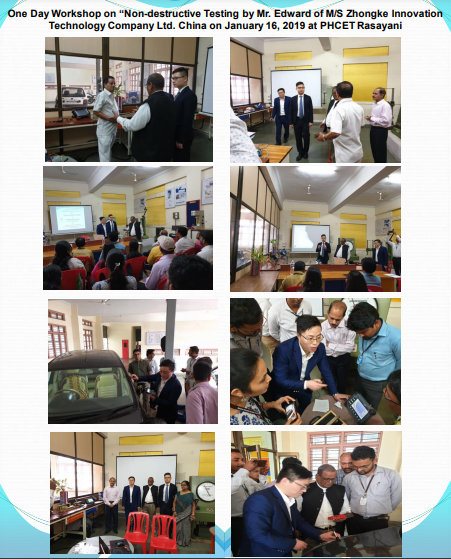

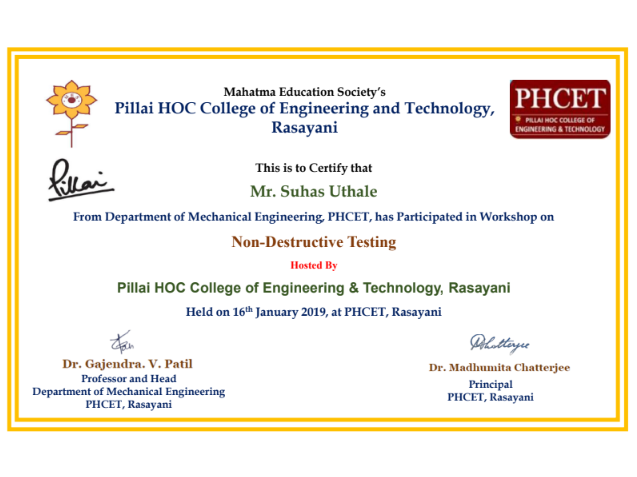

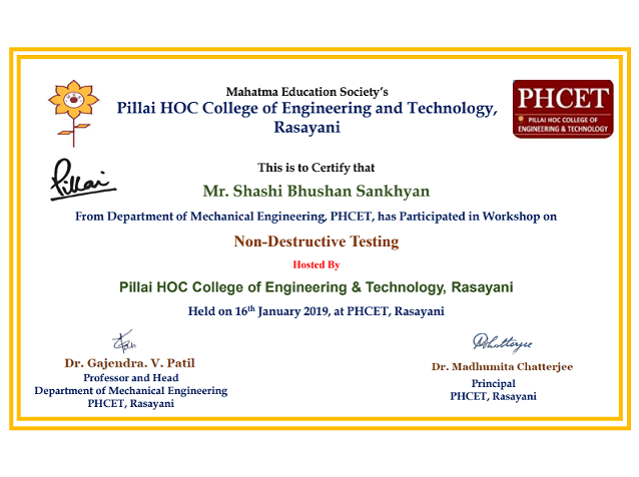

Key points about Non-Destructive Testing:
- Purpose: NDT is employed to detect and assess defects, irregularities, or discontinuities in materials or structures without altering their physical or chemical properties. It helps in identifying potential issues before they lead to catastrophic failures.
- Techniques: There are various NDT techniques, each suitable for specific applications. Common methods include ultrasonic testing, radiographic testing, magnetic particle testing, liquid penetrant testing, eddy current testing, and visual inspection.
- Ultrasonic Testing (UT): This method uses high-frequency sound waves to detect internal flaws or defects. It is widely used for inspecting welds, castings, and forgings.
- Radiographic Testing (RT): RT involves the use of X-rays or gamma rays to create images of the internal structure of an object. It is effective in identifying defects such as cracks, voids, or inclusions.
- Magnetic Particle Testing (MT): MT is used to detect surface and near-surface flaws in ferromagnetic materials by applying a magnetic field and observing the response of iron particles.
- Liquid Penetrant Testing (PT): PT involves applying a liquid with high surface tension to the surface of a material. The liquid penetrates surface-breaking defects, and after excess liquid is removed, a developer highlights the defects.
- Eddy Current Testing (ECT): ECT uses electromagnetic induction to detect surface and near-surface flaws, as well as measure material thickness and conductivity.
- Visual Inspection: The simplest form of NDT involves a direct visual examination of the object. This can include the use of borescopes, endoscopes, or other optical devices.
- Applications: NDT is widely used in industries such as aerospace, automotive, oil and gas, power generation, construction, and manufacturing. It ensures the quality of products, structural integrity, and the safety of critical components.
- Advantages:
- Cost-effective compared to destructive testing methods.
- Allows for the inspection of finished products without compromising their usability.
- Helps in preventive maintenance, reducing the risk of unexpected failures.
Non-Destructive Testing is a crucial set of techniques that provide valuable insights into the quality and integrity of materials and structures, contributing to the overall safety and reliability of industrial processes and products.


